The Indian Navy is considering leasing four or five French Rafale-Maritime’s (Rafale M) to be used on future Indian Aircraft carrier INS Vikrant. The aircraft carrier is scheduled to begin operating in August 2022.
India has started conducting a series of tests with Rafale-M for 12 days. These tests are being carried out at the Shore Based Test Facility in the state of Goa. The ground test complex at the Naval Air Base INS Hansa simulates the deck of an aircraft carrier with a length of 283 m. Rafale-M may also be tested on aircraft carrier INS Vikramaditya. The two main tests for Rafale-M aircraft will be taking off without a catapult and landing using cables as brakes.
Two western-made carrier-based fighters
The Rafale M was developed for the French Navy as the main fighter aircraft for the Charles de Gaulle nuclear-powered aircraft carrier equipped with a catapult launcher. Rafale M was the first carrier-based version of the Rafale fighter. Initially, it was originally developed and used only for the Air Force. The aircraft has undergone consistent modernization for several years, having received new weapons and avionics, including an AFAR radar. The French fighter took part in the hostilities over Afghanistan, Libya and the Middle East, conducting joint operations with U.S. Navy aircraft carriers.
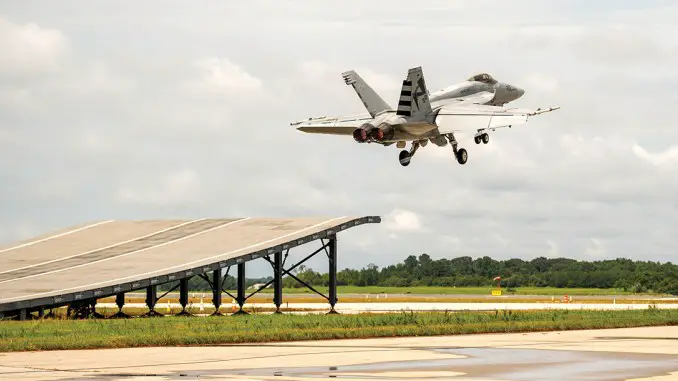
Rafale’s rival in India, Boeing’s Super Hornet, has already undergone ski-jump tests from a ground ramp in its latest Block III version at Patuxent River Naval Air Base, Maryland. Next year, the fighter is expected to arrive for testing at the Hansa airbase. The land based version of the Rafale is already in use by the Indian Air Force, including forward deployment to the Ladakh Plateau, where border tensions between India and China have escalated over the past year. Thus, one could assume that the French aircraft has a definite advantage in this Indian tender.
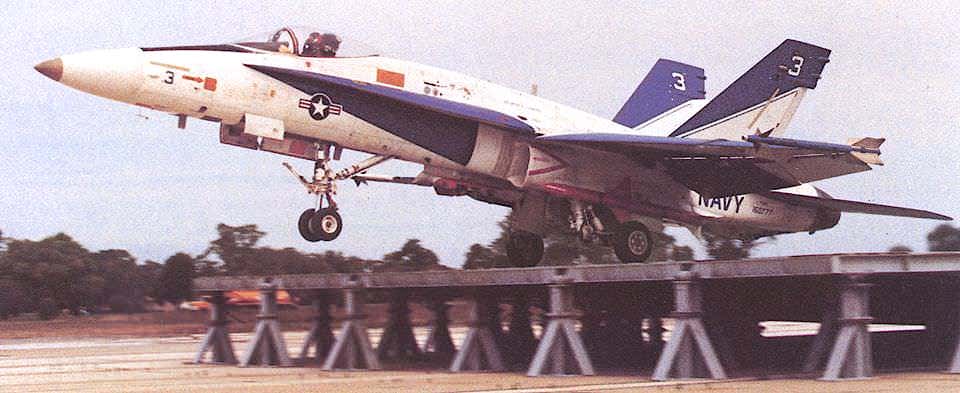
However, the procurement process for the Indian Armed Forces is always complicated, and the choice of one or another aircraft may be opposed by the rivalry between the arms of the Indian Government.
Meanwhile, Boeing is actively campaigning to sell Super Hornets to both the Indian Air Force and the Indian Navy, while Washington is actively manoeuvring to become a key supplier of high-tech defense technology to India, including the AH-64E Apache and the maritime patrol aircraft P -8I.
Operational and technical difficulties
Regardless of the Indian Navy’s choice of Rafale or Super Hornet, India will have to face many obstacles before quickly integrating one of these carrier-based aircraft as the air wing of the Vikrant aircraft carrier. In the current configuration, the elevators on this ship, located on both sides of the superstructure, are rather small since they were designed for the Russian MiG-29K fighter. The aircraft carrier will require some modification to accommodate the larger Rafales or Super Hornets. With folded wings, the Super Hornet is 9.32 m wide, while the width of the deck lift is 9.7 m. And the Rafale, which does not have a folding mechanism, is even wider at 10.9 m.
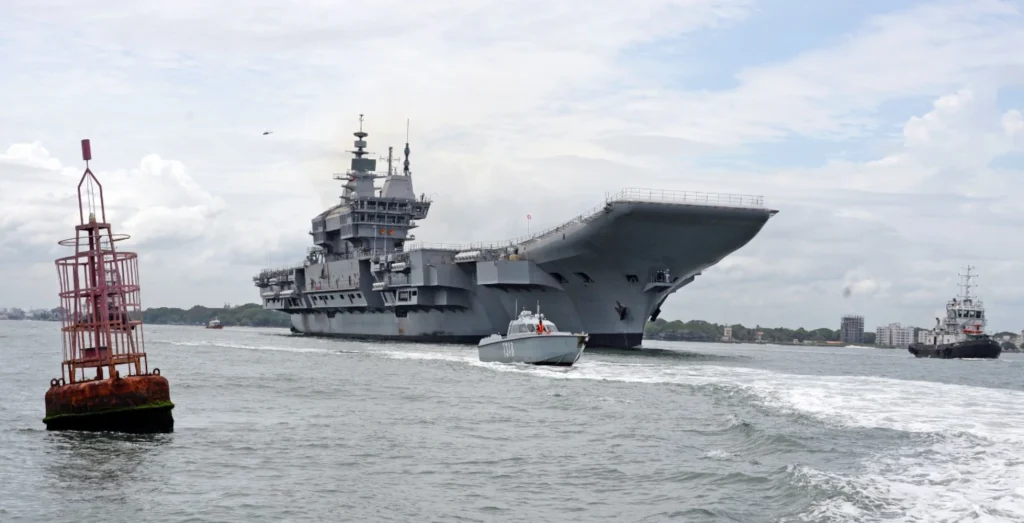
The choice of the aircraft will decide the airwing of the upcoming carrier INS Vishal
The Indian Navy is preparing to construct its next aircraft carrier, Vishal, which is planned to be significantly larger than Vikrant – 65,000 tons, compared to 40,000 tons. This new aircraft carrier is expected to be built with U.S. and British support. The carrier may be equipped with Electromagnetic Aircraft Launching (EMALS) since the United States approved the transfer of these technologies to India. Obviously, “Vishal” will be suited to fly with fighters larger than the MiG-29K. In addition, the Rafale M and Super Hornet can also operate from an aircraft carrier equipped with Catapult Assisted Take-Off but Arrested Recovery (CATOBAR).
The aircraft carrier “Vikrant” has been carrying out sea trials in the Arabian Sea and the Indian Ocean for some time. It remains unclear which fighters will ultimately “work” with it. What modifications might be required to support the aircraft once selected by the Indian Navy is also unknown.
Also read- Indigenous Aircraft Carrier, Vikrant, heads for trials after propulsion & machinery test and INS Vikrant, India’s first indigenous aircraft carrier, begins the second phase of sea trials
The Russians didn’t get the memo
In 2015, the Federal Service for Military-Technical Cooperation of Russia told the media that Vikrant would be equipped with 14 MiG-29K / KUB fighters and Russian-made Ka-28 or Ka-31 radar patrol helicopters. The agency also said that Vikrant was at the final stage of construction, and Nevsky PKB is providing technical assistance to Indian partners in creating a nationally designed aircraft carrier. In particular, Russia was helping with aviation-related advisory, equipment and documentation.
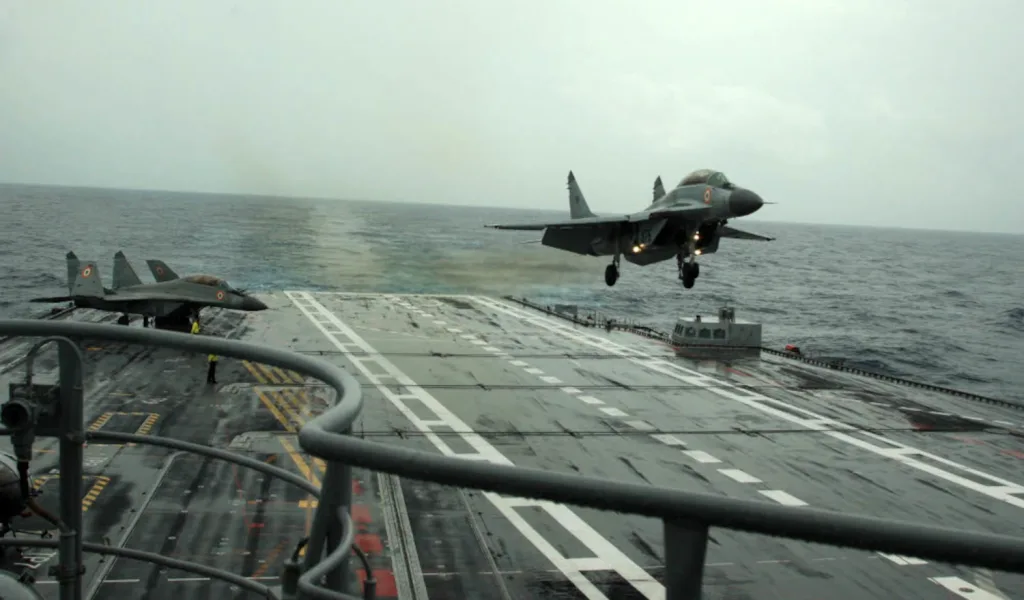
In February 2021, Russia denied that the non-delivery of the MiG-29K carrier-based aircraft caused the delay in transferring the latest aircraft carrier Vikrant to the Indian Navy. Moscow said it had not received an application from New Delhi to supply aircraft. TASS reported this with reference to a source in the aircraft industry. According to the news agency, Russia previously provided India with all the necessary information on a possible contract to supply a batch of MiG-29K carrier-based fighters for the newest Indian aircraft carrier Vikrant but has not yet received a response. In addition, India has not even issued a tender appeal for the supply of carrier-based fighters.
The Russian source was responding to the comments by MoS for Defence Shripad Naik that the transfer of the Vikranta aircraft carrier to the Indian Navy would be delayed due to “a delay in the delivery of aircraft from Russia.”
It is known that the Mig-29K’s are facing maintenance problems.
India is developing its Twin Engine Deck-Based Fighter Aircraft
The Indian Navy is currently testing a pair of Naval LCA’s (N-LCA) as a precursor to the upcoming project, the Twin Engine Deck-Based Fighter (TEDBF).
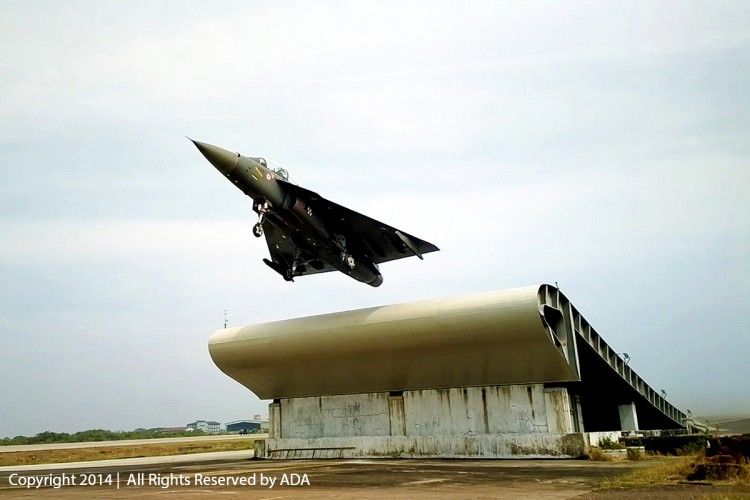
As per the information available, the TEDBF will have a maximum take-off weight of 26 tons with a length of 16.2 meters. The aircraft will be designed as per the “canard” aerodynamic configuration. It will receive a folding wing. The U.S. GE F414 INS6 turbofan engine is planned to be installed on the aircraft. For the suspension of weapons, 11 pylons will be installed on the aircraft: two on the wingtips, six under the wing, two on the fuselage sides, and one under it.
It is planned that the carrier-based combat aircraft will be able to fly at speeds up to Mach 1.6. Several stealth technologies will be used in the design of the carrier-based fighter.
As mentioned before, another light carrier-based fighter, Tejas Navy, is being developed in India. Tejas Navy differs from the air force version of the aircraft. It has a two-seater cockpit, reinforced landing gear struts and a landing hook, with the help of which it engages with the air arrestor.
